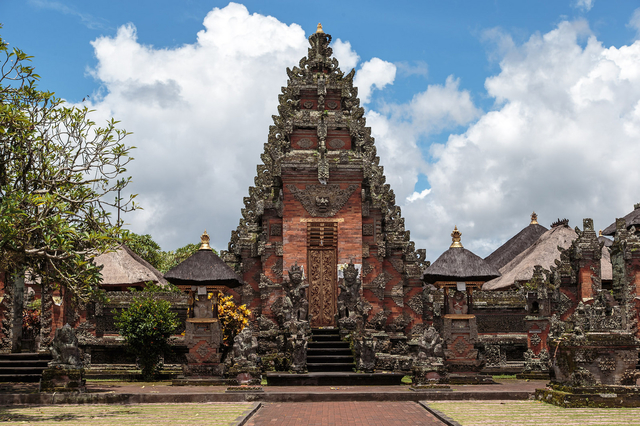
The famous Batuan Temple is officially known as Pura Puseh Desa Adat Batuan. This signifies that it serves as a temple dedicated to Mount Agung (Pura Puseh) in the traditional village (Desa Adat) of Batuan. Located approximately 10 kilometers from Ubud, it's convenient to visit if you are traveling to Ubud from the southern tourist areas of Bali or vice versa.
The village of Batuan is well-known on the island for its contribution to the culture as one of the centers of arts. It even has a distinctive Batuan style of Balinese painting.
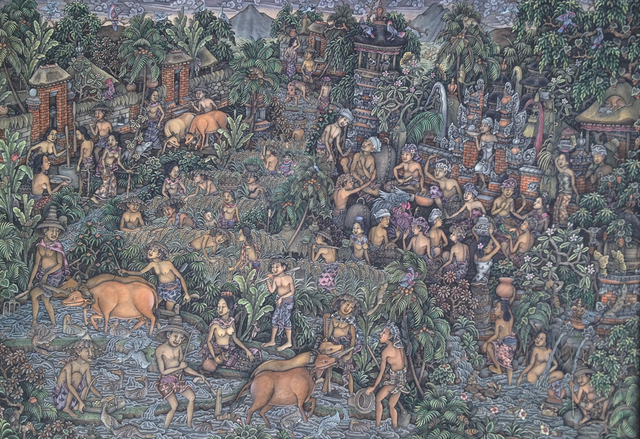
The temple complex is situated on an area of 0.65 hectares and is distinguished by intricate and well-preserved stone carvings. It was founded in the 11th century, specifically between 1020 and 1022 CE. Some historians claim that Pura Puseh Desa Adat Batuan is the oldest of the Balinese temples.
The name originates from the Indonesian word "batu," meaning "stone." Researchers suggest that this name may be related to the megalithic tradition, where stones were vertically placed to mark the location of gatherings or rituals associated with ancestor worship.
Like any other Balinese temple, it consists of an outer courtyard (Nista Mandala), a middle courtyard (Madya Mandala), and the innermost sanctum (Utama Mandala), which is the most sacred.
At the entrance of the temple, there is a spacious area with parking and a traditional large Balinese pavilion called "wantilan." Typically, the wantilan is used for meetings, dance lessons, and performances of traditional Balinese dance. Representatives of the temple usually sit there, lending visitors "kamben" or "sarong," which are required attire for entering the sacred area. Tourists typically make a donation of their choice for entry into the temple.
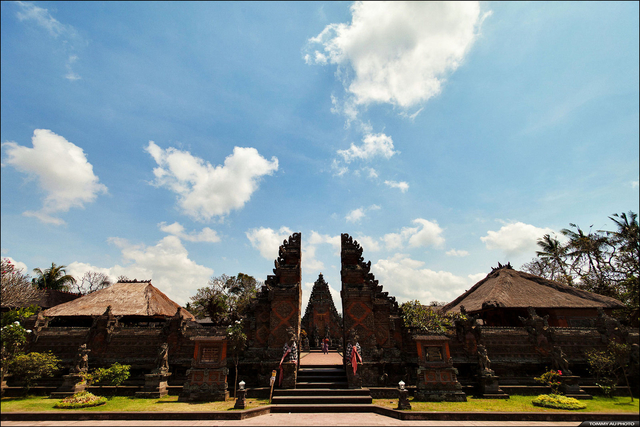
Passing through the multi-tiered split gates of the temple, you will see figures of Balinese mythical creatures and natural ornaments, as well as depictions of the triad of the main Hindu gods - Brahma, Vishnu, and Shiva.
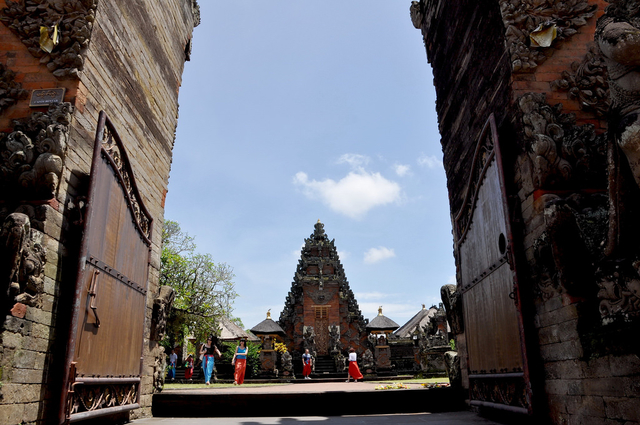
Here, in the first courtyard, there is a pleasant garden, and figures of Balinese deities are installed. There is also a long building called Bali Agung or Bale Kul-kul, where the ceremonial bell is located.
The courtyard is paved with ornate tiles, the rows of which are interspersed with rows of neatly trimmed grass.
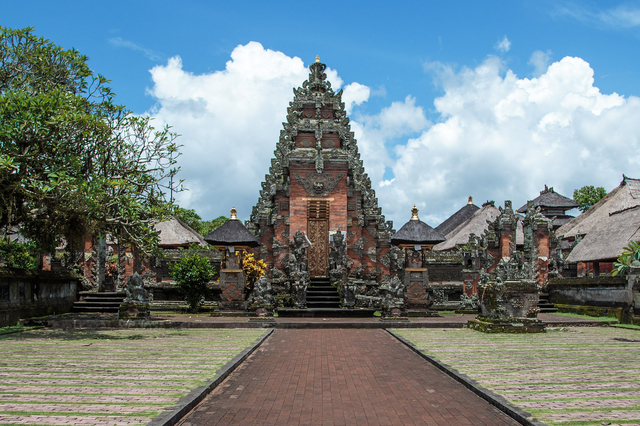
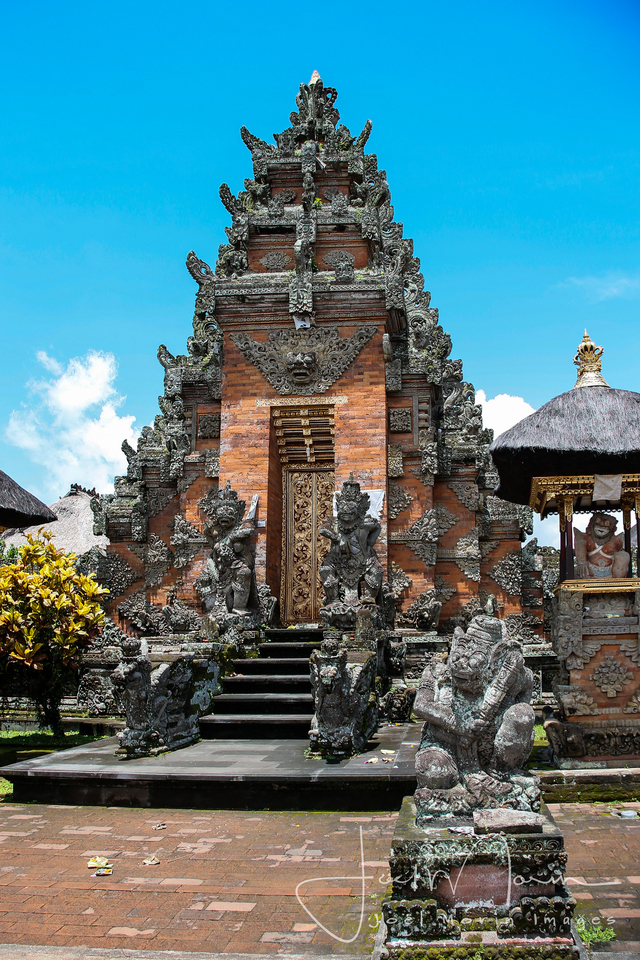
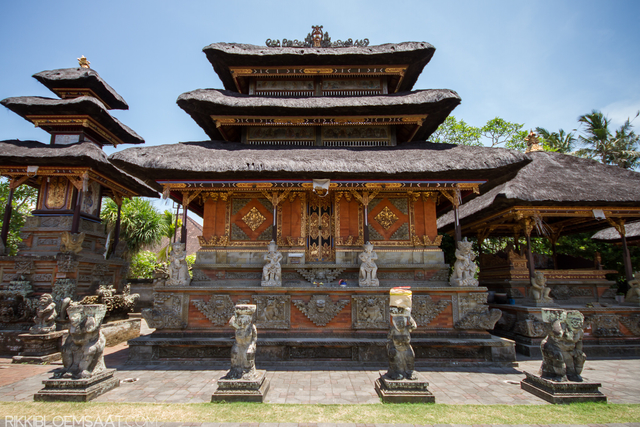
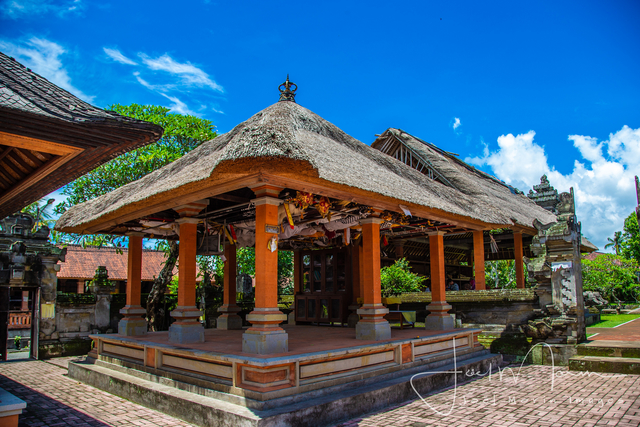
The next courtyard also features elaborately decorated gates with figures of fierce guardians. However, to allow visitors access to the middle courtyard, two additional entrances are made on the left and right, and the main carved gates open only on major holidays.
Multilayered rows of shrines under thatched roofs in the next courtyard are typical of all major temple complexes in Bali. They symbolize the sacred Mount Meru from Hindu myths.
Here is also the Padmasana altar, used for worshiping the supreme Balinese god Sang Hyang Widhi Wasa.

Within the temple grounds, there is a small pond with a gigantic statue of a turtle floating in the water, seemingly carrying two Balinese altars on its shell.
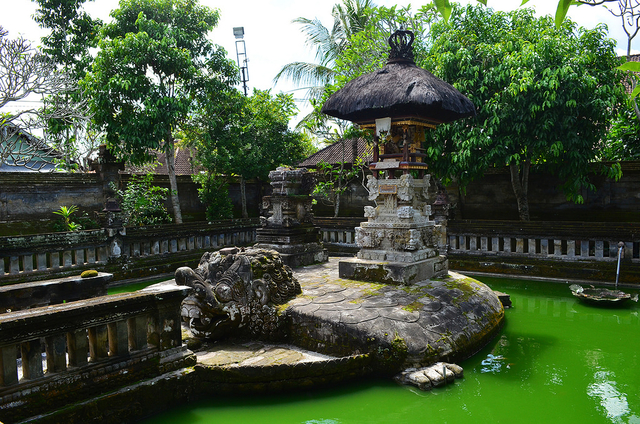
Tourists are not allowed to enter the most sacred inner courtyard. Access is granted only to the believers who come with offerings.
It's best to visit this temple during festivals when it is filled with Balinese people dressed in ceremonial attire, bringing lavish offerings of fruits and flowers.
If you can't catch a festival dedicated to the temple, plan your visit around a Barong dance performance that takes place here from time to time.
The temple is very popular among tourists, and during the day, many buses with tour groups stop here.
To enter the temple, a voluntary donation is sufficient.
You can add one right now!